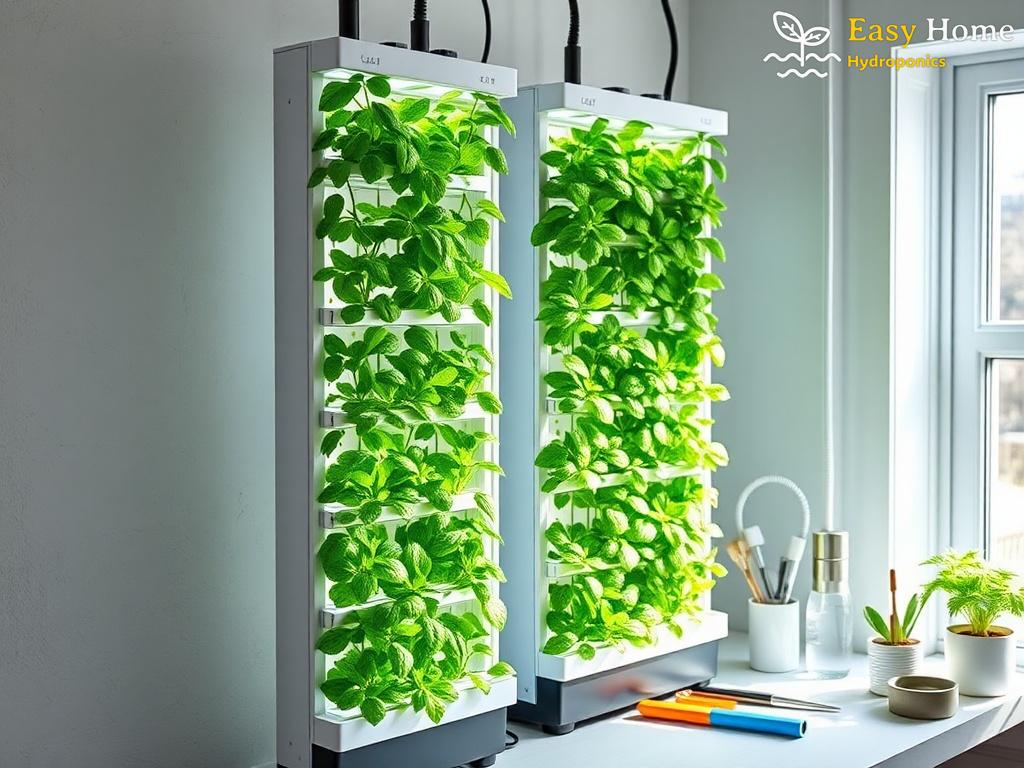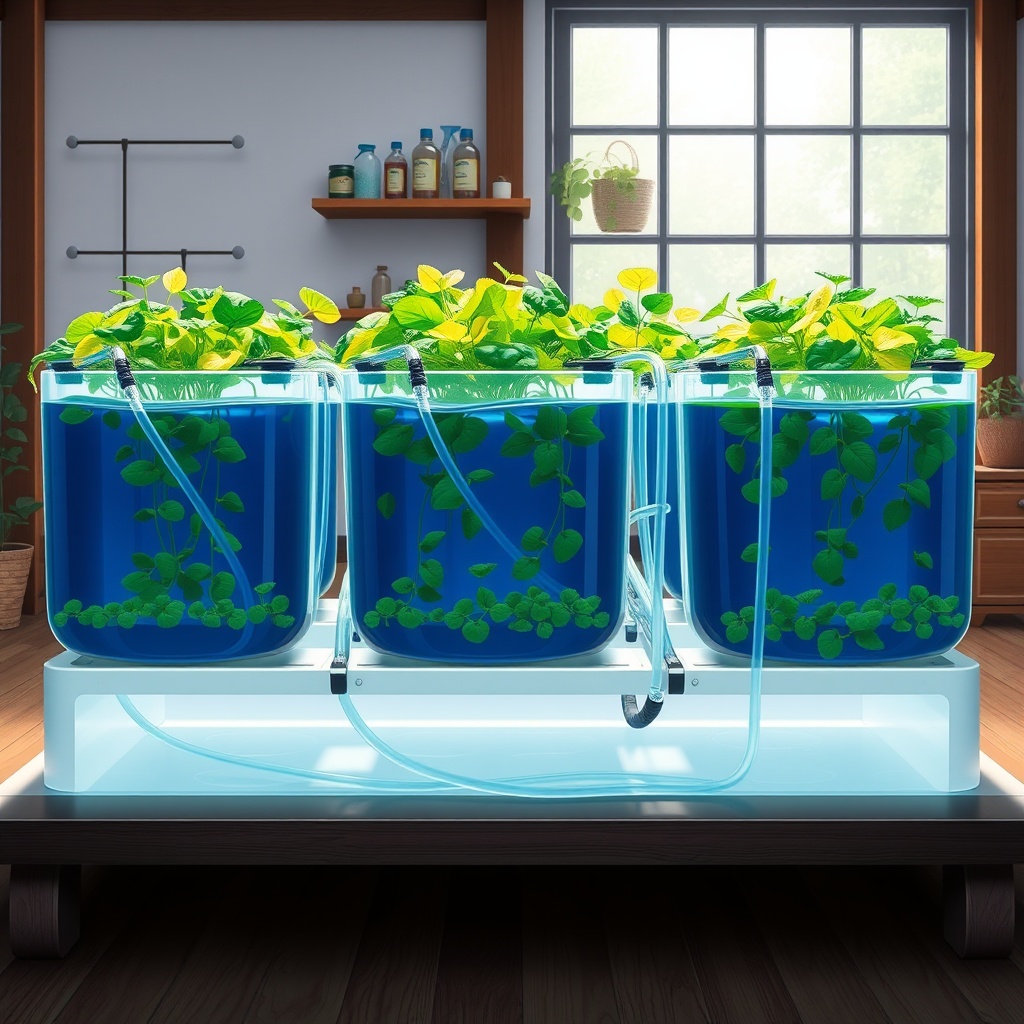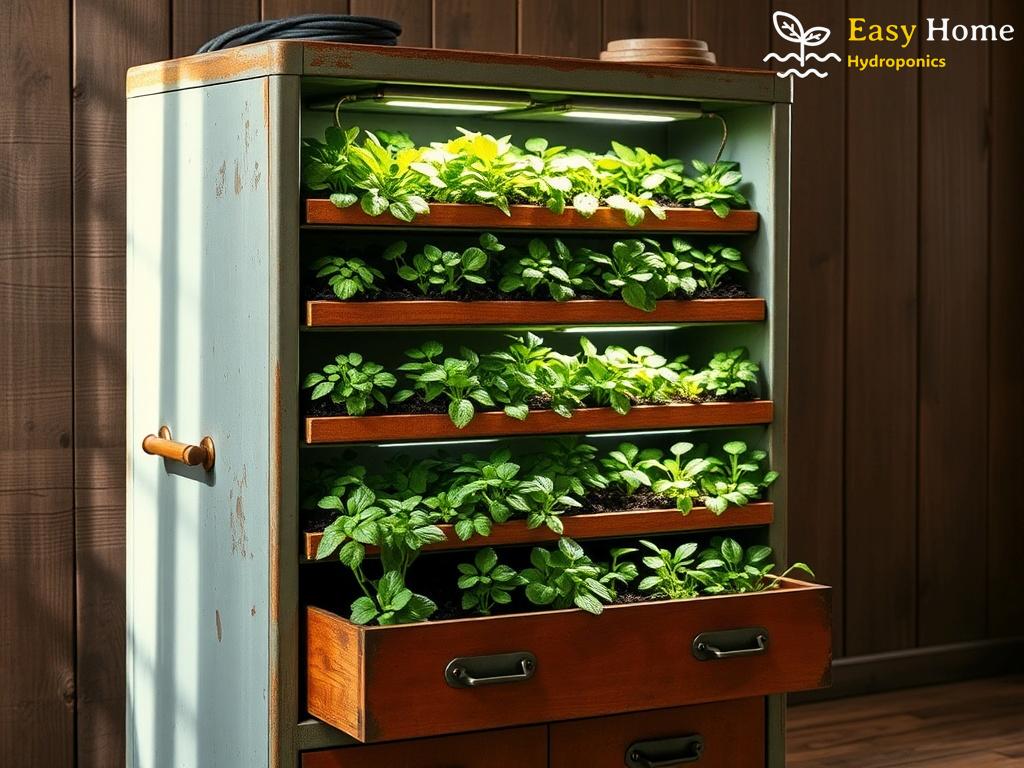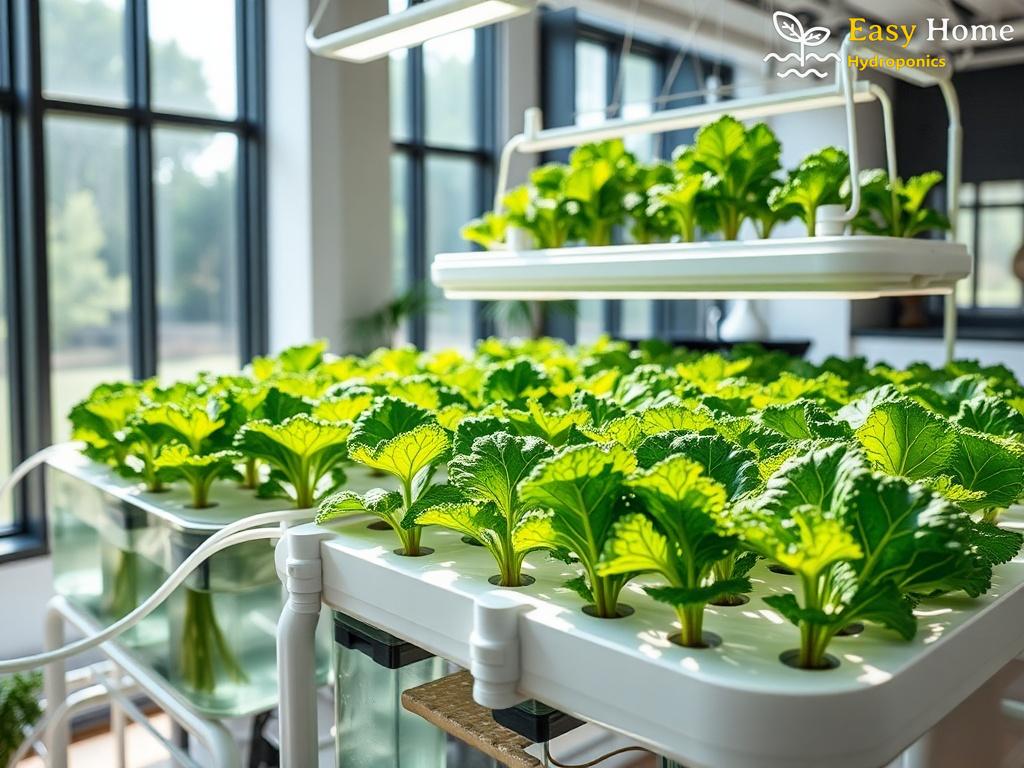Choosing the Right Hydroponic System
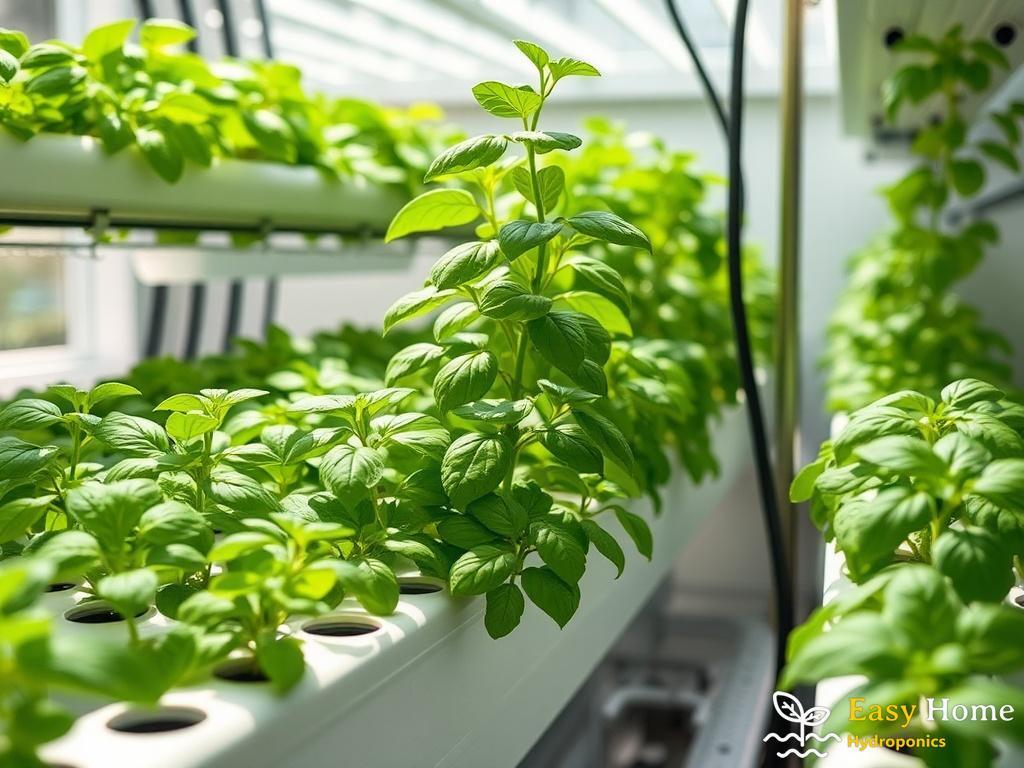
In the world of modern gardening, hydroponics stands out as a revolutionary method, allowing enthusiasts to grow herbs like basil with unmatched efficiency and quality. But how do you choose the right hydroponic system for your basil? The options can be overwhelming, but understanding the different systems will set you on the right path to a thriving herb garden.
Hydroponic systems come in various types, each with unique advantages and drawbacks. Whether you have limited space or a desire for maximum yield, there’s a system tailored for your basil-growing aspirations. Here’s a comparison of some of the most popular hydroponic systems:
| Hydroponic System | Key Features | Best For |
|---|---|---|
| Deep Water Culture (DWC) | Plants are suspended in nutrient-rich water; oxygen is supplied via air stones. | Beginners and small-scale growers. |
| Nutrient Film Technique (NFT) | Thin film of nutrient solution flows over roots; efficient use of nutrients. | Advanced growers seeking high yields. |
| Ebb and Flow (Flood and Drain) | Plants are periodically flooded with nutrient solution and then drained. | Growers looking for flexibility and scalability. |
| Wicking System | Utilizes a wick to draw nutrient solution to plants; simple and low maintenance. | Those with limited experience or resources. |
Choosing the right hydroponic system involves more than just understanding the types available. Here are some essential factors to consider:
- Space: Evaluate how much space you have and whether your system can fit comfortably.
- Budget: Different systems come with varying costs; ensure you choose one that fits your financial plan.
- Maintenance Level: Consider how much time and effort you’re willing to invest in maintenance and monitoring.
- Growth Goals: Are you looking for a small hobby or a large-scale basil production? This will guide your choice.
By keeping these factors in mind, you can confidently select a hydroponic system that will flourish alongside your basil, ensuring you enjoy a bountiful harvest.
Optimal Nutrient Solutions for Basil Growth
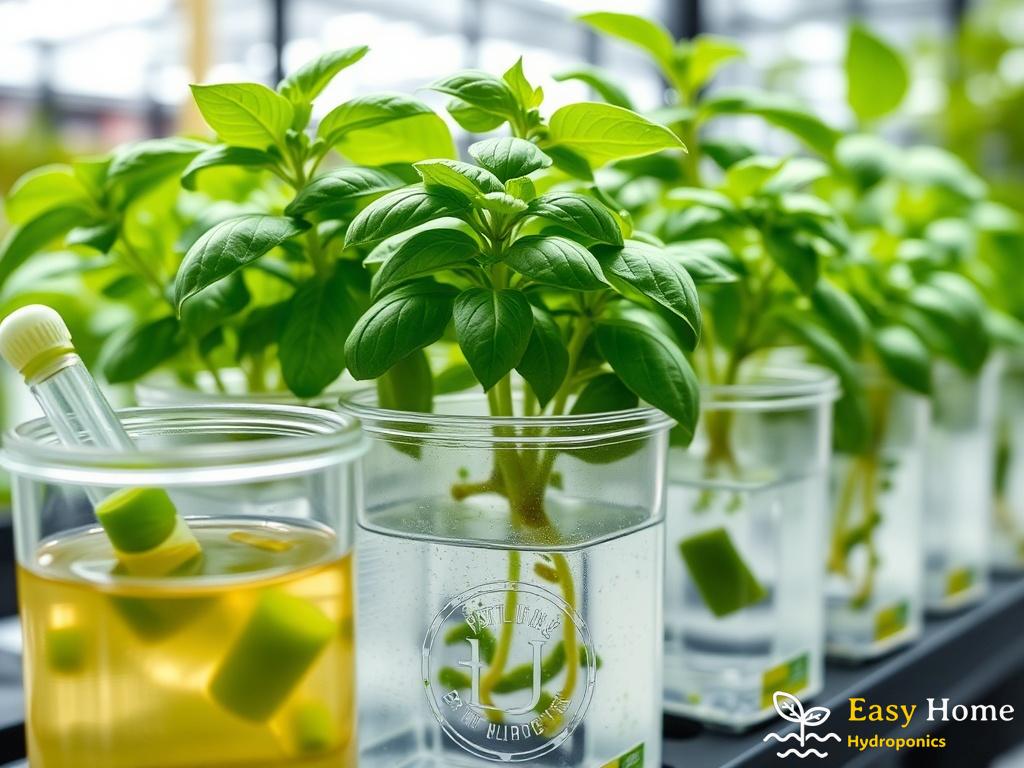
When embarking on your hydroponic journey, grasping the nutritional requirements of basil is crucial. Basil thrives in well-balanced nutrient solutions that cater to its unique growth stages. Essential nutrients include nitrogen, phosphorus, potassium, calcium, magnesium, and trace elements such as iron and manganese. Each nutrient plays a vital role in supporting leaf development, enhancing flavor, and ensuring robust growth. For instance, nitrogen is pivotal during the vegetative phase, while phosphorus facilitates root development and flowering.
Creating an optimal nutrient solution for basil goes beyond simply mixing elements; it involves understanding the specific ratios that promote healthy growth. A typical nutrient solution for basil may have a balanced N-P-K ratio of around 3-1-2. This ratio can vary based on the growth phase of the plant. For instance, during the initial stages, a higher nitrogen concentration is beneficial, while a shift towards potassium is essential as the plants mature. Regular monitoring of the nutrient solution’s pH—ideally between 5.5 and 6.5—is equally important, as it directly affects nutrient availability. Hydroponic growers might consider using pre-mixed nutrient solutions specifically designed for herbs, simplifying this process.
Once you have established your nutrient solution, monitoring becomes key to ensuring your basil plants receive the right balance. Utilizing tools like EC (Electrical Conductivity) meters can help you gauge nutrient concentration. Basil typically thrives in an EC range of 1.5 to 2.5 mS/cm. Regular adjustments based on plant growth stages and environmental factors will enhance your yield and overall plant health. Additionally, incorporating organic supplements, such as fish emulsion or seaweed extract, can provide an extra boost of nutrients, further enriching your basil’s flavor profile.
Lighting Strategies for Indoor Basil Cultivation
When it comes to indoor basil cultivation, the right lighting is not just a luxury but a necessity. As basil is a sun-loving herb, replicating natural sunlight conditions is crucial for promoting robust growth and vibrant flavors. Choosing the appropriate lighting strategy can significantly impact your hydroponic system’s overall productivity, leading to a rewarding harvest that delights both the senses and the palate.
Understanding Light Spectrum and Its Importance in basil growth is essential. Plants utilize different wavelengths of light for various growth processes. The blue spectrum (400-500 nm) is vital during the vegetative stage, promoting leaf growth and overall plant health. Conversely, the red spectrum (600-700 nm) plays a critical role as basil transitions into flowering and fruiting stages. Striking the right balance in these light spectrums ensures your basil plants develop strong stems and lush foliage, ultimately enhancing their flavor and aroma.
Choosing the Right Light Source for your hydroponic basil system involves considering various options. LED grow lights have gained immense popularity due to their energy efficiency, longevity, and ability to emit specific light spectrums tailored to plant needs. Fluorescent lights, particularly T5 models, are also effective for small-scale setups, providing a broad light spectrum while maintaining lower heat output. However, traditional HID (High-Intensity Discharge) lights, like HPS (High-Pressure Sodium), can produce intense light but may generate excessive heat, necessitating additional cooling solutions.
Incorporating a lighting schedule is equally important in indoor basil cultivation. A common practice is to simulate the natural day-night cycle, providing approximately 12 to 16 hours of light followed by 8 to 12 hours of darkness. This regimen not only mimics basil’s natural environment but also allows the plants to rest, facilitating metabolic processes that contribute to growth. Adjusting the duration and intensity of light exposure according to the growth stage can further optimize your basil’s development, leading to a bountiful harvest.
pH and Temperature Control Techniques
When embarking on the exciting journey of hydroponic basil cultivation, mastering the nuances of pH and temperature control is essential for cultivating lush, flavorful plants. These two factors can make or break your hydroponic success, influencing nutrient availability and overall plant health. As a hydroponic gardener, understanding how to maintain optimal conditions will empower you to unlock the full potential of your basil crop.
The pH level of your nutrient solution significantly impacts how well basil can absorb nutrients. Basil thrives in a slightly acidic environment, with an ideal pH range of 5.5 to 6.5. Regularly testing and adjusting the pH is paramount, as fluctuations can lead to nutrient lockout, stunting growth and diminishing flavor. Utilizing pH test kits or digital meters will allow you to monitor levels efficiently. Should you find the pH straying from the desired range, simple adjustments can be made using pH up or down solutions, ensuring your basil has access to the nutrients it craves.
Equally crucial is the control of temperature. Basil prefers a warm environment, thriving at temperatures between 70°F to 80°F (21°C to 27°C) during the day and slightly cooler at night. Sudden temperature shifts can stress the plants, leading to poor growth and increased susceptibility to pests. To maintain a stable environment, consider investing in thermostats and heaters for colder months, as well as fans for ventilation during hotter periods. Maintaining consistent temperatures not only supports vigorous growth but also enhances the aromatic qualities of basil, resulting in a more vibrant flavor profile for your culinary creations.
In conclusion, integrating effective pH and temperature control techniques into your hydroponic system is essential for a successful basil harvest. By vigilantly monitoring these critical factors, you can create a thriving environment where your basil can flourish, providing you with a bountiful supply of fresh herbs for your kitchen.
Common Pests and Diseases in Hydroponic Basil
As you embark on the thrilling journey of hydroponic basil cultivation, understanding the potential threats that can compromise your lush plants is vital. Unlike traditional soil gardening, hydroponics presents unique challenges, particularly concerning pests and diseases. By familiarizing yourself with these common adversaries, you can take proactive measures to safeguard your basil and ensure a bountiful harvest.
In the hydroponic environment, pests can proliferate rapidly, often thriving in the warm, moist conditions that basil loves. Knowing how to identify and manage these nuisances is crucial for maintaining plant health.
- Aphids: These tiny, sap-sucking insects can quickly colonize your basil leaves, leading to stunted growth and yellowing foliage.
- Spider Mites: Often mistaken for specks of dirt, spider mites thrive in dry conditions and can cause significant damage through their feeding habits, resulting in webbing on plants.
- Whiteflies: These small, white insects not only suck sap from your basil but also excrete honeydew, which can lead to sooty mold.
Each of these pests can be managed with a combination of biological controls, such as introducing beneficial insects like ladybugs, or using organic insecticidal soaps that target the pests without harming your basil.
While pests are often visible, diseases can lurk undetected, wreaking havoc on your hydroponic basil. Recognizing the signs of common diseases will help you act swiftly before they spread.
- Powdery Mildew: A fungal disease that manifests as white, powdery spots on leaves, powdery mildew thrives in high humidity and poor air circulation.
- Root Rot: Caused by overwatering or poor drainage, root rot can lead to wilting and eventual death of the plant.
- Downy Mildew: Similar to powdery mildew but more aggressive, downy mildew can cause yellowing leaves and a fuzzy growth on the undersides.
Implementing good cultural practices such as maintaining proper airflow, ensuring adequate drainage, and monitoring humidity levels can significantly reduce the likelihood of these diseases taking hold.
To keep your hydroponic basil flourishing, consider these effective strategies for pest and disease management:
- Regular Monitoring: Keep a close eye on your plants for any signs of pests or disease.
- Sanitation: Clean your growing area and tools regularly to prevent the spread of pathogens.
- Organic Solutions: Utilize neem oil or insecticidal soap as natural remedies to combat pests.
- Healthy Practices: Rotate crops and ensure biodiversity in your hydroponic system to disrupt pest life cycles.
By integrating these proactive measures into your hydroponic system design, you can cultivate a healthy, productive basil crop that will thrive in the face of challenges.

